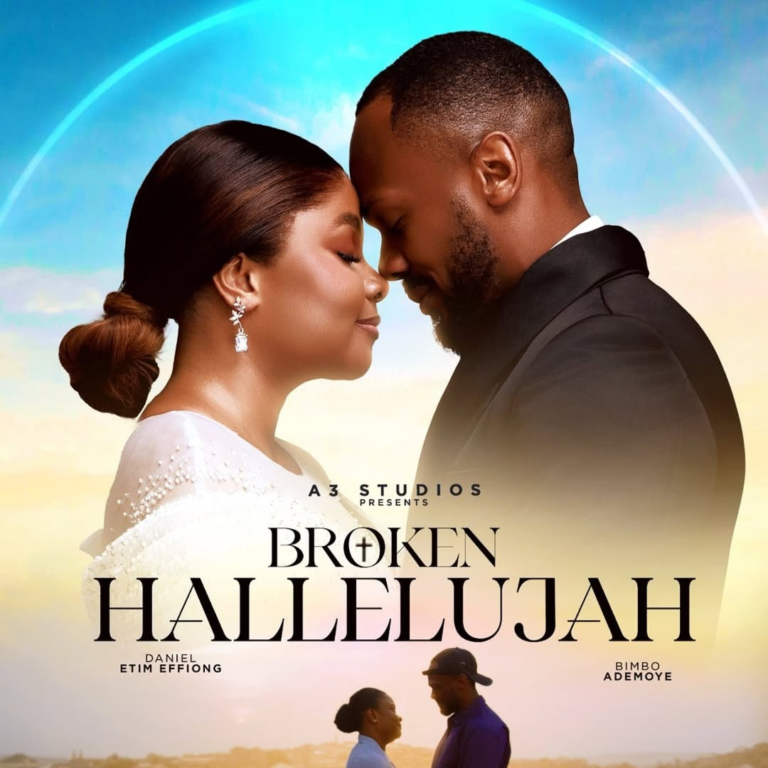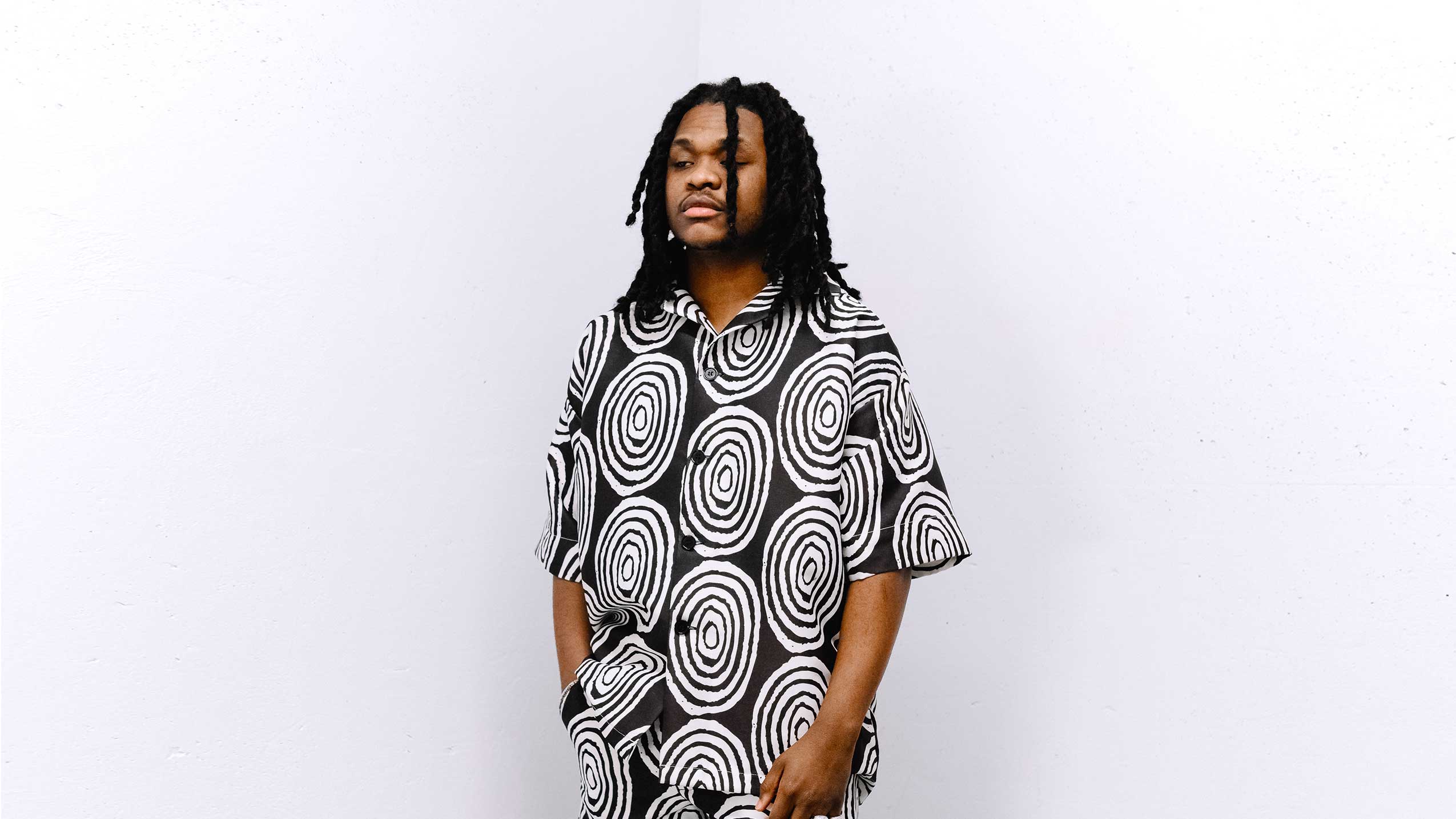In 2001, when Eldee and the Trybesmen, Modenine, Terry tha Rapman and Swatroots were heavily adorned in customised triple XL tees and snapbacks, baggy jeans and Timberlands, a young Ice Prince had just transitioned from a consumer into a recording Hip-Hop artist. Following the footsteps of his predecessors who were in music groups, he formed the short-lived Ecomog Squad alongside his friends. When this group died within the first year, Ice Prince formed Grip Boyz with other guys from Jos: J Milla, Endia and Yaadman (FKA Yung L).
By 2004, Ice Prince’s debut solo single was out. He had also engaged one ‘Migrep,’ now known as M.I. Abaga, in a rap battle and was subsequently homies with M.I and younger brother Jesse Jagz, becoming a part of their Loopy Music group.
The Plateau State native had a dream to be a mass appeal. Ice Prince believed in his abilities, as did M.I and Jesse. He didn’t walk alone; he had two musical geniuses in his corner.
Come 2006, the year of “Pentium IX,” Ice Prince appeared in Modenine and Terry tha Rapman’s Spazmodic music video shot in Jos — a testimony of his affiliation with the country’s best MCs. But he was still unknown to the core rap audience outside Jos. Under the wings of the Abaga brothers and Loopy Records (which later became a sub-label under Chocolate City Music), Ice Prince found a lifetime family and brotherhood. He learned to write songs, arrange vocals, and structure music, knowledge for which he consistently credited M.I.
J-Town Boy on big stages
In 2008, while talent hunts and reality shows snowballed in Nigeria, the lemon-lime beverage Sprite grabbed Ice Prince to host the first Sprite Triple Slam, a talent show that took Nigerian artists and their music around the country.
According to culture journalists Motolani Alake and Osagie Alonge, a music manager at the time, Ice Prince did over thirty national shows and began to build his name off that. But this didn’t happen by sheer luck.
Ice Prince was green on the scene, but a dope rapper is a dope rapper. Earlier that year, he’d appeared and gained some recognition from Blaze, the eighth joint on M.I Abaga’s debut album, “Talk About It.” Ice Prince passed the mic around at the time with three other already-known MCs (Jesse Jagz, Blaise and M.I), cleverly rhyming about smoking pot. Rolling with the group, his dreams of making it to Lagos to level up his talent and craft eventually came true.
In 2009, Ice Prince won the Hennessy Artistry Club Tour against Skales. The following year, Ruggedman’s She ‘N’ Swagga listed Ice Prince as a guest artist. By then, he was already in his early artist development phase and had signed with the mother label, Chocolate City Music. In 2010, his instant hit Oleku, originally meant to go on one of Sarz’s beats, ended up on Jesse Jagz’s production. It’s a cool, obtainable song that still dances on the lips of the old and young. It became a hit in the country immediately after it dropped. It was the biggest record of 2010 and 2011 and arguably the first of its kind by a Nigerian rapper, and the rewards came quickly. Ice Prince rose from a C-list artist to a superstar. Even after Superstar, Ice Prince’s follow-up hit, Oleku stretched for a year, built the ladder Ice Prince climbed to stardom, and made him the rave of the following four years.
At the 2011 Headies, Ice Prince had the most (six) nominations and won the Song of the Year award. Oleku also earned him other awards, including the Nigeria Entertainment Awards’ Hottest Single of the Year, Young Artist of the Year, and City People Awards’ Song of the Year. To date, Oleku remains one of Africa’s most prominent rap songs and most covered Nigerian songs.
Oleku and Superstar were eargasms. Add these to the promise of Ice Prince’s debut album, and listeners had something to look forward to. In October 2011, his debut album, “Everybody Loves Ice Prince,” was a commercial success.
The rapper sprouted from the legacies of Jay-Z, Nas and local heroes like Modenine, Eldee, OD, Sasha, Solo D, Jeremiah Gyang and M.I Abaga. Upon becoming a big tree, he threw a thoughtful honourary party for “those that came before him” on Remember, the album intro. Other highlights on the album, like Juju, Baby, Magician and Somebody Lied, introduced and distinguished Ice Prince as a hybrid artist. He raps, sings (his hooks) and endeavours to ragga, a complete artist.
Like fellow rappers Olamide and Phyno, Ice Prince balanced his deep-rooted Hip-Hop influence with a commercial appeal and sleek aesthetics accessible to the high and low classes. They’re the honchos who succeeded in the golden era of Nigerian Hip-Hop.
Criticisms, accolades, influence
Time is a factor that shaped criticisms of “Everybody Loves Ice Prince”. Journalists, writers, critics and major listeners from that time grew up in an era of hip-hop music that embodied hardcore lyricism, consciousness, and substance. Looking back, “E.L.I.” wasn’t the delight of the critics, and listeners had mixed reviews. Ice Prince’s raps were called ‘corny’ — that may be true. But the M.I-wannabe label was a reach. Ice Prince, in turn, became one of Nigeria’s top pop acts in the 2010s, surpassing Eedris Abdulkareem and M.I’s heights of commercial success. Rap heads may say “E.L.I.” isn’t their fulfilment of hip-hop, but it has songs that started parties, and many people sang along and turned up to it.
Cheesy lines are hard to ignore, but the influence of music spreads beyond that in the case of Ice Prince. His coolness, charisma, delivery, Hip-Hop fashion and lifestyle carry everything else. If Ice Prince didn’t say his debut title came from the act of love and support he received after his mum’s demise — a few months before “E.LI.” came out — it’d still hit like a prophecy. His coolness is as untameable as a wild North polar bear. He made young listeners love clothes and look fantastic like his pop counterpart Wizkid made youngins shorten their names and add “kid” as a suffix to make cool nicks—E.g, Marvkid, Joshkid, etc.
Every period has its style. Just like there are dread-headed artists in baggy clothes and buff designer sneakers now, the 2010s had Ama Kip Kip tees, Supra sneakers, Obey caps, wide-frame pop glasses, colourful G-Shock wristwatches, Shambala bracelets. These and Blackberry phones were the accessories to ID Ice Prince. He had a strong sense of fashion and was big enough to influence the culture to dress like him. He made Agbada and Jalamia look super cool in sneakers and wore a pair of sneakers in different colours. He had a swag of a sophisticated style that didn’t fit the typical Northerner stereotype, making him more interesting to watch and listen to. His style set a male fashion trend that influenced artists and young guys until the Alté fashion came circa 2015.
The mixed reviews of his debut continued to support his rise. Many songs had verses from Ice Prince for the next two years, as if he was their missing component. From Samklef’s Molowo Noni to YQ’s Efemile (Remix) to Reminisce’s 2 Mussh (Remix) and Bez’s Super Sun (Remix), he built a ‘resume’ off of the songs he featured on.
Singles like More and Aboki preceded his 2013 sophomore album, “Fire of Zamani.” The album also features popular songs like Whiskey, Gimme Dat, and I Swear. The Aboki remix didn’t make the album, but it’s one of Africa’s biggest musical collisions, featuring Wizkid, M.I., actress Mercy Johnson, Sarkodie from Ghana and South Africa’s Khuli Chana. Its impact tipped the album forward as another one of Nigeria’s hottest. But that was all.
It’s an excellent second album with a few tracks that got more spins than the whole body of work. Some songs stuck, some hit but didn’t hold, and some were skips. “FOZ” is a continuation and upgrade of his first album rather than a collective idea. After winning the BET Awards 2013’s Best International Act: Africa award, the album’s guest appearances from Chip (UK), Wale and French Montana (US) are attempts to export globally. He even met Hip-Hop icons like Jay-Z and Birdman.
His reputation as a singer and rapper has made him a better music maker than a lyricist, but even musically, little has stuck since his classic debut. His 2015 “Trash Can EP” seemed like a resurgence, but it produced a sleeper hit like Mutumina. It promised a comeback but delivered half-assed music; one could even take the EP title literally. It’s like drips of ideas that turned into icicles. It offered nothing new but was good enough to keep his music lovers in bed with him.
A corner of the critic’s community theorised that the comfort of wealth and lack of passion have regressed Ice Prince’s artistry. But that’s a narrow observation without the added layer of Chocolate City Music’s decline and Choc Boiz’s collapse. M.I’s time as the label president didn’t scale the artists on the roster. Choc Boiz, the last Nigerian musical group that had a family type bonding after Mo’Hitz and P-Square fell off. In an interview from 2023, Ice Prince stated Jesse Jagz, the group’s producer, should have done more to keep the group together by getting them busy with piles of music. That sounds convenient, but history shows that they were already in different places musically at the time. M.I was busy with Chocolate City operations. Jagz had started his imprint. Ice Prince looked forward to his label while he served as M.I’s vice president.
Ageing gracefully
Ice Prince thrived among conscious rappers in the 2010s who drew in the middle class audience. He was the most pop among his peers and got handsome rewards for it as he outsold them all, but his peak came at the wane of US-centric Hip-Hop in the mainstream. By 2016, when he independently released his third album, “Jos to the World,” under his Super Cool Cats imprint, Local Rappers (2015) had happened. A paradigm-shift occurred in the consumer attitude toward Nigerian rap — local hip-hop songs and movements delivered in native tongues became the audience’s taste. Like many English-speaking rappers that lost relevance during the “Ibile” insurgence, except for M.I with consistent, strategic comebacks and a dedicated fanbase, Ice Prince’s throwbacks excited more than fresh drops. But it wasn’t for long.
M.I, Ruggedman, YQ, Jahbless, etc., put Ice Prince on earlier. He began to pay it back on “C.O.L.D,” a music project released in 2018. Ice Prince switched his style to try something new, evolve with time, and tap into the younger rap audience. The tape features the then-newcomers JethroFaded, Straffiti, RemyBaggins, PatricKxxLee and old-timer K-Switch. The music on this eight-track project is an intimate expression of Ice Prince’s heart-on-my-sleeve, melancholic and relationship issues phase, although meshed in heavy bass and funk, moody chord riffs, smoky emo-trap and jiggy dancehall. “C.O.L.D” is hot ice, but it went under the radar due to zero promotional push and its earlier exclusive release on Soundcloud. After that, it was single releases, fly Instagram posts and occasional public appearances.
Five years later, Ice Prince’s effort to follow up resulted in “To Be Continued,” the second instalment after his 2015 “Trash Can EP.” Without sacrificing his rap roots for the exploration of Afrobeats, Ice Prince celebrates his wins and sheds his vulnerability. It felt good to hear the OG on wax again, but the music failed to hold the listeners. Kolo with Oxlade in 2021 was huge, but Ice Prince was forgettable on it. But he didn’t touch a new ceiling. It’s why his 2024 singles like Bank Alert and Untitled should have stayed longer in the kitchen, cooked it a bit more and let it sauté. We’ve had a taste, and the full meal, a new album titled “Fire and Ice,” is in view with a tingling promise of exciting listeners, especially day-ones. In the last few days, his X activity has been up. His tweets have paid respect to his old and new teams, fans, and influences. “Fire and Ice” is the duality of the J-Town rapper explained. “Fire” is Panshak Henry Zamani, and “Ice” is a deeper layer of the Ice Prince we know.
Listeners can easily conjure greater appreciation for Ice Prince’s music now than in the past periods they first dropped. The songs are crafted for celebratory timelines of the average Nigerian life. Ice Prince rarely puts listeners in the philosopher’s zone like Whiskey or outs their insecurity like on Juju. But when you get your first big check, Superstar is a big mood. When you step inside a gathering with stacked pockets, I Swear suffices and Mutumina shouts out your guys. Olofofo tells haters to fuck off. Jumbo and More hit when you’re on lover’s time. Can I Talk is everything in-between, blessed with two lyrical verses from M.I Abaga and US rapper Joell Ortiz. Even when Ice Prince’s new music fails to stick around, they rub listeners like old acquaintances.
Ice Prince influenced fashion looks, charisma and fly rap music. Although the top of the top is relative, he’s had a hassle-free career, cultural acceptance and international successes marked by numerous accolades. Ice Prince was the dream of living life like rappers do. Now he’s a certified OG, ageing with grace.




